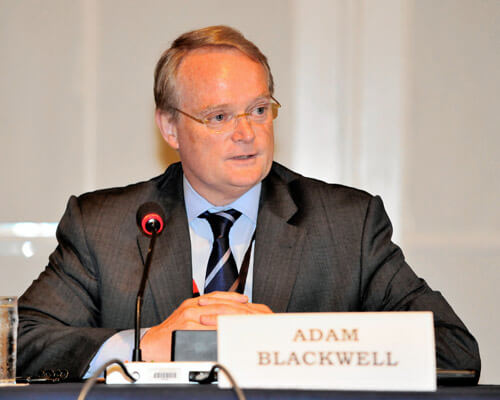The Organization of American States (OAS) and the Latin American and Caribbean Internet Addresses Registry (LACNIC) on April 8 signed a cooperation agreement with the aim of strengthening the development of cyber security in the region.
“This agreement is another example of the commitment of the OAS General Secretariat to create synergies with other cyber security stakeholders in the Americas, which will have both hemispheric and global benefits,” said Secretary for Multidimensional Security of the OAS, Adam Blackwell.
“This new partnership with LACNIC will help to further strengthen ties between governments, the private sector, civil society, and thus ensure a multidimensional approach to cyber security,” he added.
Raúl Echeberría, the executive director of LACNIC, underscored the progress of Internet use in Latin America and the Caribbean, and warned of the risks to regional security involves the use of new technologies.
“The growth of the Internet in Latin America and the Caribbean, with a current penetration of 40 percent and more than 225 million users, presents new challenges, including cyber incidents and increasingly sophisticated hacking attempts that decrease the reliability of the internet,” he said.
“This agreement with the OAS is part of LACNIC’s policy to work with the region’s technical community to respond to and mitigate the impact of cyber incidents,” he added.
According to the OAS, the agreement, signed during the “LACNIC 19” meeting in Medellin, Colombia enables both institutions to exchange information regarding the planning and development of cyber security initiatives of mutual interest.
The OAS said the formal partnership with LACNIC will help the hemispheric body promote efforts related to its “Inter-American Comprehensive Strategy to Combat Threats to Cybersecurity.”
It will also help organizations to develop institutional research activities in the context of academic cooperation, the OAS said.
Through their collaboration, the OAS said both organizations will seek to improve technical governmental capacities, improve coordination and strengthen educational initiatives for the safe and secure use of information technology in the Americas.























